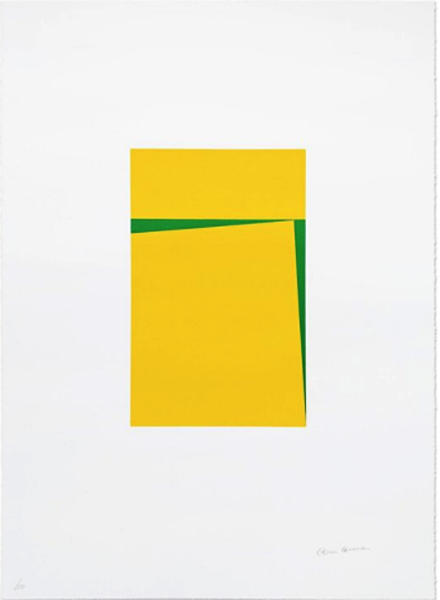Carmen Herrera (May 31, 1915 – February 12, 2022) was a Cuban-born American abstract, minimalist visual artist and painter. She was born in Havana and lived in New York City from the mid-1950s. Herrera’s abstract works brought her international recognition late in life.
Core to Carmen Herrera’s painting is a drive for formal simplicity and a striking sense of colour: “My quest”, she said, “is for the simplest of pictorial resolutions” (2012). A master of crisp lines and contrasting chromatic planes, Herrera created symmetry, asymmetry and an infinite variety of movement, rhythm and spatial tension across the canvas with the most unobtrusive application of paint. As she moved towards pure, geometric abstraction in the post-war years in Paris, she exhibited alongside Theo van Doesburg, Max Bill and Piet Mondrian and a younger generation of Latin American artists, such as members of the Venezuelan Los Disidentes, Brazilian Concretists and the Argentinian Grupo Madi. Her work also chimes with her peers from the U.S. school such as Barnett Newman and Leon Polk Smith. Reflecting on this period, she said, “I began a lifelong process of purification, a process of taking away what isn’t essential” (2005). While allied with Latin American non-representational concrete painting, Herrera’s body of work established, quietly but steadily, a cross-cultural dialogue within the international history of modernist abstraction.

